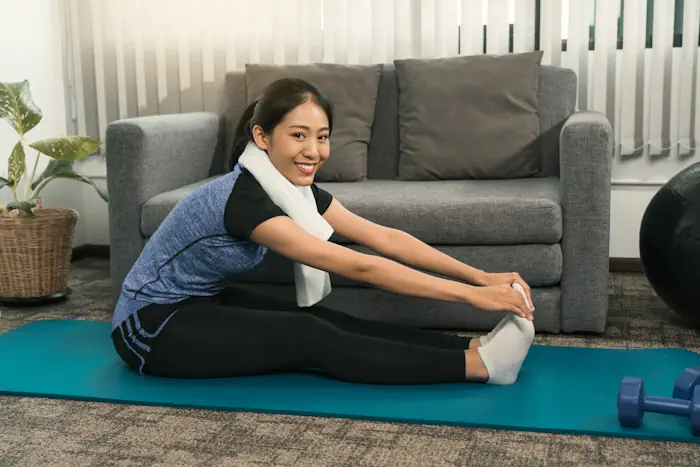Topics
The pelvic floor, a crucial yet often overlooked muscle group, plays a pivotal role in women’s overall health and well-being. Strengthening these muscles not only aids in childbirth and recovery but also offers numerous other health benefits like improved posture, enhanced bladder control and preventing pelvic floor muscle dysfunction in the future.
That said, the pelvic floor can weaken as the women gradually march through different life stages, such as pregnancy, childbirth, and ageing. This can lead to conditions such as incontinence and pelvic organ prolapse.
What Is the Pelvic Floor and Its Function?
The pelvic floor (pelvic diaphragm) is a domed muscular structure that separates the pelvic cavity (above) from the perineal region (below). This cavity houses the pelvic viscera – uterus (in females), intestines, and bladder.
The pelvic floor performs various vital functions related to urethral, bladder and sexual activities. Here are some of the functions of the pelvic floor muscles in women:
- Supporting the uterus during pregnancy and childbirth.
- Enhancing sexual experience.
- Supporting the sphincter muscles around the urethra, vagina, and anus that function to regulate the flow of urine, faeces, and bile.
- Circulation of lymphatic fluids from the heart to the legs and back.
- Providing stability to the spine and pelvis.
What Are the Signs of a Weak Pelvic Floor?
Factors that influence pelvic muscle floor strength include:
- Pregnancy
- Childbirth
- Aging
- Chronic cough for more than three months
- Chronic constipation for more than three months
The following are some signs of a weak pelvic floor:
- Urinary incontinence: Urine leakage during certain activities such as sneezing, exercising, or laughing.
- Pelvic organ prolapse: Displacement of pelvic organs such as the rectum, bladder, and uterus.
- Vaginal dryness: Painful sexual experiences due to dryness and reduced muscle tone.
- Tampon displacement: Falling out or dislodging of tampons.
- Vaginal flatulence: Weakening of muscles leading to an accumulation of air.
- Recurrent thrush or UTIs: Frequent infections related to vaginal or urinary health.
- Faecal incontinence: Involuntary release of stool from the body.
- Frequent urge to urinate: An increased need to urinate frequently.
How to Locate Your Pelvic Floor Muscles?
Following are some techniques to locate your pelvic floor muscles:
- Stopping the urine flow
One of the easiest ways to identify the different parts of your pelvic floor muscles is to stop the flow of urine flow midway.
However, this should not be misidentified as exercise but only as a way to identify the muscles needed for bladder control.
- Visualisation
Another method is imagining stopping the urine flow and holding the flatus simultaneously. This can be done by standing, sitting with legs wide apart, or lying down.
- Release the tension in your thigh, buttock, and abdominal muscles.
- Contract the muscles around the front opening as if attempting to halt the urine flow.
- Tighten the muscles around the vaginal and anus area and lift upward within the pelvic region.
- Concentrate on the muscles encircling the front and back passages, drawing them upward and inward into the pelvic area.
- For those familiar with using tampons, envision pulling up on the muscles in the vagina as though adjusting the position of a tampon higher inside.
- Recognise the group of muscles that activate during these coordinated actions. Subsequently, release and let them go slack.
What Are the Benefits of Pelvic Floor Exercises for Women?
Pelvic floor muscle exercises are designed to strengthen pelvic floor muscles. They primarily involve contracting and relaxing the muscles of the pelvic floor region.
Research indicates that pelvic floor exercises, such as Kegels, can enhance inter-abdominal pressure during activities like laughing or coughing, reducing the risk of unexpected leakage.
Various benefits of these exercises include:
- Preventing pelvic floor prolapse.
- Addressing urinary incontinence issues.
- Offering enhanced support to the foetus during pregnancy.
- Facilitating a more comfortable process for urination and bowel movements.
- Easing the childbirth process and notably decreasing postpartum incontinence risks.
- Enhancing intimate experiences by alleviating discomfort from vaginal dryness or tense pelvic floor muscles.
What Are Pelvic Floor Strengthening Exercises for Women?
Following are some effective exercises for strengthening the pelvic floor muscles:
1. Pelvic Floor Muscle Training (PFMT) or Pelvic Floor Muscle Exercise (PFME)
PFMT or PFME are some of the most widely sought pelvic floor exercises for women. They are easy to perform and give lasting results if consistent.
You can perform pelvic floor muscle exercises while lying down, standing, or sitting. For best results, it is advisable to perform these while lying down. Make sure to empty your bladder before performing the exercises.
Do consult a doctor before starting your exercise routine to ensure you can perform them.
Here are the steps to get started:
- Locate the pelvic muscles as described in the earlier section.
- Tighten your pelvic muscles to the best of your ability and hold them for three seconds. After that, gently relax for 3 seconds. This is one Kegel.
- Repeat the above ten times (one set).
- Do one set in the morning and evening.
- As you gradually gain strength, increase the number of repetitions and duration.
- For example, you can gradually increase the duration up to 10 sec and do 15 sets.
2. Squats
These are another effective way to repair and strengthen your pelvic muscles. Follow these steps to get the best results:
- Position yourself with your feet at a hip-width distance, ensuring they remain firmly grounded. Gently bend your knees, aligning them with your toes.
- Descend only to a point of comfort while maintaining a straight back.
- As you return to standing, direct your attention toward contracting your pelvic floor and engaging your buttocks.
- Perform the sequence six times, then allow for a brief pause before commencing another set.
This exercise bolsters your pelvic muscles and contributes to lower body strength and stability. Remember to maintain a consistent breathing pattern and focus on your form throughout the movement.
3. Glute bridge
This is a popular exercise for strengthening the buttocks. It can also help to strengthen the muscles of the pelvic floor region. Here are some of the steps to follow:
- Assume a supine position with knees bent and feet flat on the floor, maintaining hip-width separation.
- Position your arms alongside your body with palms facing downward.
- Contract your buttocks and pelvic muscles and lift the buttocks a few inches above the ground.
- Maintain this position for 3-9 seconds.
- Relax the pelvic floor muscles and buttocks, and gently lower them back on the ground.
- Iterate this exercise in sets of ten repetitions, and complete two additional sets for a comprehensive workout.
4. Runner’s lunge
- Start with the plank position with hands placed directly below the shoulders.
- Pace your right foot forward, placing it adjacent to the outer border of your mat, near your right pinky finger
- Ease tension in your hips and back, allowing them to descend towards the floor.
- Inhale and sustain this posture for 30 seconds, then transition to the opposite side.
It is a commonly found mistake that most people use their leg muscles to hold the hips up. It is essential to release your hips to experience a deep stretch. This is an excellent stretch which gives better results with less effort.
5. Bird dog
- Get into a tabletop position.
- Place the shoulders directly over the wrists. Hips should be aligned with the knees.
- Put stress on the pelvic muscles and abs.
- Stretch the right arm forward and left leg behind you while flexing the left foot.
- To deepen the stretch, visualise yourself pushing your heel hard against the wall and reaching the hand forward.
- Hold your breath for 5-10 seconds and gently bring your hand and leg down.
- Alternate each side with 6-8 repetitions.
What Exercises Should Be Avoided with a Weak Pelvic Floor?
For women diagnosed with a weak pelvic floor, it is advisable to avoid high-impact exercises. This includes any activities involving jumping with both feet off the floor as the pelvic floor undergoes intense downward pressure when you land. When repeated multiple times, your pelvic floor could get fatigued and experience lasting damage.
High-impact exercises may sometimes cause urinary incontinence in females. This effect is seen more profound if they are mothers.
Additionally, if you have recently undergone surgery to correct a pelvic floor disorder or are suffering from weak pelvic muscles, it is highly recommended to avoid exercises such as:
- Running
- Skipping
- Jumping
- Weightlifting
- Gymnastics
- Triathlons
- Intense core exercises
Make an Appointment at Pantai Hospitals
This article has mentioned some of the important exercises that help strengthen pelvic muscles in females. It is recommended to make these exercises a part of your routine for best results. All said, before you start pelvic floor exercises, it is recommended to seek advice from your doctor to confirm their safety.
Get in touch with us to book an appointment with our team of gynaecologists and physiotherapists today, or find out more about our Obstetrics and Gynaecology Services, as well as our Physiotherapy and Rehabilitation Services at your nearest Pantai Hospital.
Pantai Hospitals have been accredited by the Malaysian Society for Quality in Health (MSQH) for its commitment to patient safety and service quality.
This article has been reviewed by the Pantai Integrated Rehab team.













